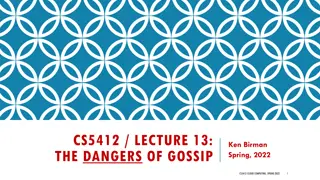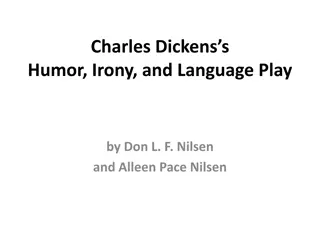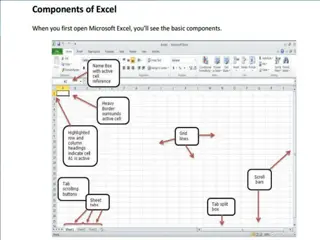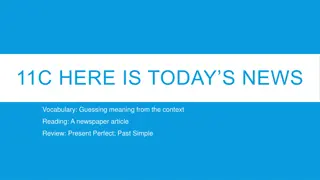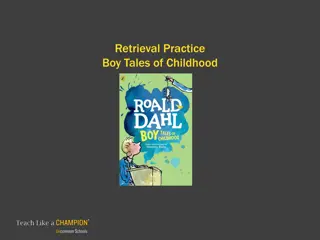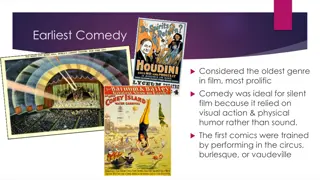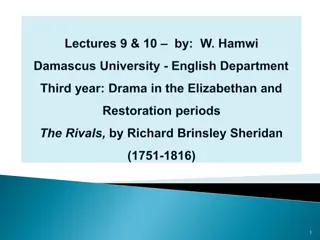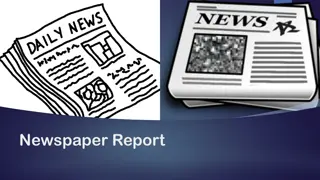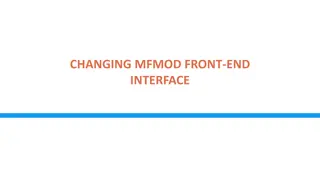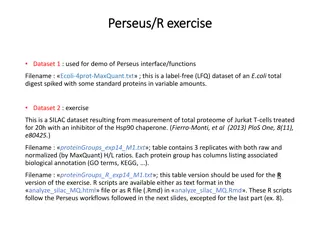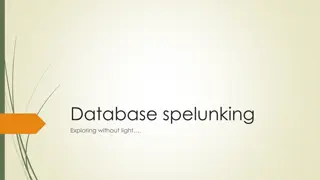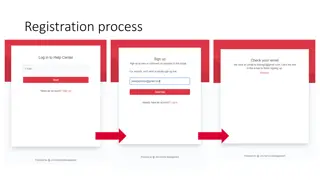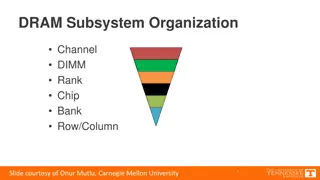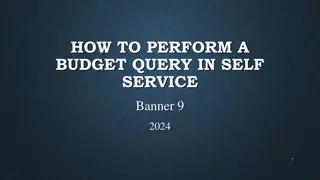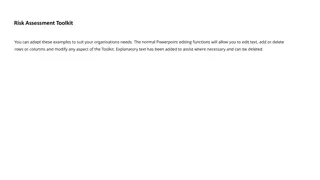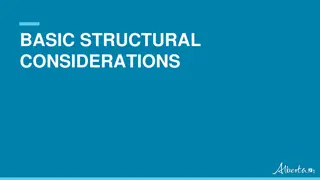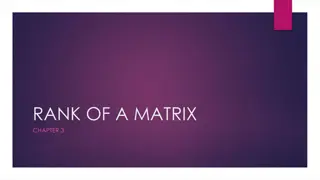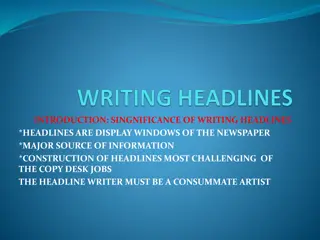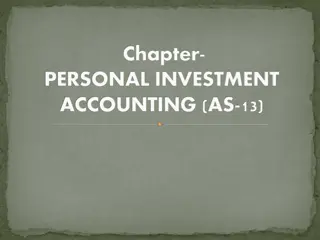Exploring the World of Newspaper Columns: Advice, Gossip, and Humor
Discover the world of newspaper columns, where writers express opinions, provide advice, share gossip about celebrities, and inject humor into everyday life. From advice on relationships to humorous takes on current events, columns offer readers a diverse range of perspectives and topics.
Download Presentation

Please find below an Image/Link to download the presentation.
The content on the website is provided AS IS for your information and personal use only. It may not be sold, licensed, or shared on other websites without obtaining consent from the author. Download presentation by click this link. If you encounter any issues during the download, it is possible that the publisher has removed the file from their server.
E N D
Presentation Transcript
Columns Opini n Writing
Columns Many opportunity to express their opinions and show their voices from a platform called a column. Newspaper columns provide the reader with a diversion from straightforward news stories. They may express the viewpoints of columnists in a scathing or humorous manner, and typically attempt to persuade readers or to simply entertain them. Columns often provide a combination of fact- based information and opinion. seasoned journalists dream of their
Types of Columns These are the types based on the topic of a column. Advice: Advice columns give readers the opportunity to ask questions and seek guidance in areas of their life. Common topics include relationships, work, home repairs and automobile maintenance. Advice columnists are experts in their field so that the reader is assured of receiving competent advice. typically considered
Types of Columns Advice columns date to the 18th century, when American newspapers published letters written by spurned lovers and offered relationship advice. Perhaps two of the most famous American advice column were the syndicated Dear Abby column and the Ann Landers column, which both offered relationship advice.
Types of Columns Gossip: Gossip columnists provide the latest updates concerning celebrities people. The columnist often speculates about what may be occurring in celebrities private lives or what they may do in the future. Gossip columnists often walk a fine line between engaging in relatively harmless insinuations and actually libeling and defaming the name and reputation of their subjects. and other prominent
Types of Columns Gossip columns were in their heyday during the golden age of Hollywood, in the 1930s and '40s, when movie studios used them as a way of promoting their film stars. Famous gossip columnists Hopper, who was an actress and developed her career as a gossip columnist from her exposure to film stars. include Hedda
Types of Columns Humor: A newspaper writer who displays a knack for wit may find an opportunity as a humor columnist. Humor columnists may poke fun at people in the news such as politicians and celebrities or draw from personal experiences in their everyday life. Some humor columnists specialize in areas such as parenthood or the workplace. In Jang newspaper Ataulhaq Qasmi often write humorous columns. .
Types of Columns Food Columns: Food columnists present their views on food- related topics. This can consist of restaurant reviews, their opinions on major developments in the food industry or their views on home cooking. Food columnists often have reported on food issues for years and are plugged into the food industry.
Types of Columns Sports Columns: Sports columnists present their opinions on games, developments and controversies in the sports world. These columns occasionally are written by former star athletes or coaches as well as by journalists. Sports columns are newspapers. common in most
Types of Columns Business Columns: Business newspapers corporate developments, stock-market trends, investments and economic transitions. Business columns are a helpful resource for those entering business or new investors. columns and are included such in many discuss issues as
Types of Columns Metro Columns: Metro columnists write about local issues that can include urban and regional planning, local government issues, crime, legal affairs and controversial news, among many others. This type of column often encourages citizens to get involved in their communities.
Column Writing While writing a column for any newspaper, these are the main things you need to consider: Content - what you actually say. Is it 'right' and is it interesting? Organization - how you lay out your writing. Is it 'right' and is it clear? Accuracy - words, spelling and grammar. Are they the 'right' words in the 'right' style?
Column Writing Effect - how you create an impact. Have you grabbed the reader and made them feel what you intended? Genre - what form are you writing (an article, script, poem, letter, story etc)? Audience - who are you writing it for (kids, adults, males, females etc)?
Column Writing Purpose - why are you writing it (to persuade, argue, review etc)? Once you can answer these questions, you will be able to work out the fourth key idea: Style - how are you writing (formal, chatty, serious, comic, slang etc)?
Column Writing What newspaper are they writing for? Will the readers be interested in their story? Which part of the paper are they writing for? How long does the article need to be? What are this newspaper's readers like? (This helps identify what formal/informal, simple/more complex language, young/older vocabulary.) When the journalist knows the answers to these questions, he or she will be able to work out the style and word count. to style to use - eg
GENERAL STYLE OF THE COLUMN Five General Styles There are five general styles, employed in the column-writing. It now depends on the columnist to choose and select the style of a column according to his aptitude, personality consonance with the type of his column. The selection of an appropriate style also depends on the nature of material a columnist desires to employ and attitude in close
Unified Style When a column is desired to be composed and written on a simple subject throughout, a columnist is said to have utilised the unified style. As per unified style, such column is in fact an essay formally or informally in order to attune his topic and approach. A unified style is generally used by the political columnist, the sports columnists used the unified style to discuss a single subject on each day. It is also useful for those who cater to single-idea columns. columnist. These
Anecdotal Style In this style, a number of unrelated and related stories and a variety gathered in a single column. These unrelated stories and varied observations however could bear no similarities and have no bearing on each other. By anecdotal style, a columnist is able to include several subjects ranging anecdotes or observation in a single column. of observations are from six to ten
Departmental Style When a columnist has arranged and managed such material, which can be easily divided and separated into different departments, it is known as a departmental style It is most effective for random observation, little known information and provocative bits of news of general interest, which all collectively make the columns most practised. The departmental columns may be given such names as, in the mailbag , lest we forget , things to remember , and Passing Parade . popular and generally
Question-and-Answer Style Under this style of column-writing, a columnist gives a question and then answers it. By this style, a columnist makes the columns easy to understand and intelligible even to the general readers. This style of writing a column gives ample opportunities to the columnist to raise questions of national importance, and then answers them in easy and understandable style and language. and paramount
Be specific Kareem was attacked by an animal isn t nearly as effective as Kareem was bitten on the knee by a Dog. Focus on things that can be seen or heard or measured. Give the reader specific people, places, sounds, colours, smells, scenes and sensations. Generalities are too abstract.
http://www.pkcolumns.com/2012/05/21/lal- masjid-rewarding-an-insurrection-by- pervez-hoodbhoy/
Use Active Verbs It s better to make the subject of your sentence do something, rather than let something be done to it. The owl hooted is stronger than An owl s hoot was heard. The first is active, the second passive. http://www.pkcolumns.com/2010/07/24/cor recting-a-false-start-by-praful-bidwai/
Use Quotes If writing a profile about a specific person, by all means let the reader listen in on what the profile subject has to say. But quotes will enliven even if you it is not about profile. If writing about a thing or an event or an idea, and refer to some authority to buttress presentation, open the authority s mouth and let him or her say something.
http://www.pkcolumns.com/2010/07/24/in- hope-to-awaken-their-conscience-by-dr- haider-mehdi/ http://www.pkcolumns.com/2010/07/23/on e-people-by-harris-khalique/
Use Characterisation Not only do your readers want to hear a person talk, they want to see the person. Give them a glimpse, example: Faraz is a short, rumpled little man who wears a blue beret and his collar turned up. He has a fat nose and big ears. such as this
Show, dont tell So show the reader. Show the shy smile, or the shaking hands, or the gritted teeth or the long, low sigh. Don t write, The professor acted strange. Instead, write: The professor drooled on his tie, staggered against the blackboard and slid to the floor, moaning. Now the reader knows what you mean by strange.
http://www.pkcolumns.com/2010/07/23/ha ndcuffed-to-history-by-aijaz-zaka-syed/
Describe scenes Vivid, brief description of scene and setting can help immensely in holding readers attention and propelling them through a story. http://www.pkcolumns.com/2010/07/22/fro m-the-mori-to-the-maidan/
Use vivid figures of speech This device is handy, but it can be dangerous. Some figures of speech sparkle and are entirely appropriate. The danger is that they often fall flat. http://www.pkcolumns.com/2011/11/28/ind ia-and-the-south-china-sea-by-momin- iftikhar/
Use Analogies An analogy is a comparison of similarities. Often, with technical information, the use of analogies can help explain complex ideas. The image comes to mind instantly, helping to clear away confusion.
Use Humour Readers welcome the light touch. Even if subject is serious, slide a bit of humour into it.
Use Carry-Over Transitional Devices His books depart from tradition in another way Perhaps so, but DEA officials say The Russians have other cards to play as well But that s only half the answer Still not satisfied? Then try
Use Carry-Over Transitional Devices But most circus fans were asking a different question Meanwhile, a search for solutions continues...
Use Overlapping Words or Ideas This is another good transitional device. It calls for fashioning your link between divergent paragraphs by repeating words or ideas, even though the new paragraph will tackle a totally new concept.
SELECTION OF A TOPIC There are certain things, which must be kept in mind. However, it is always considered, how readers will react to it , prior to selecting the topic.
SELECTION OF A TOPIC A difficult task Brainstorm with others is also a good idea because besides giving you new ideas, they add something to your arguments. Plus it also helps in seeing both sides of the same picture. However, it must never be taken for granted. Finding a new topic or subject every day or every alternative day is definitely difficult, and usually regular columnists can fall prey to this.
Choose from the news items of dailies One of the easiest ways to find an idea is of discussing news items, considered to be a bad idea. This also helps in actualizing the saying Bring to focus what is current , and news items aptly cover this idea. He must discuss it in a wider perspective, that is, the present situation in background. This also helps in maintaining the currency of a column. and it is never
Current May be any incident Sometimes subject of a column, and the columnist never chooses an incident against editorial policy. For even an unreported incident, currency of the incident is a must. One basic criterion for such a selection is how far the incident has affected, adversely or positively, the readers. See what others do not see is the basic idea of looking for possibilities. unreported incidents can be a
Close to your heart Subject must be touching your heart or mind, and it can even any incident from ordinary life, may be a chat with the family or someone coming up with a statement. Anything that makes you think, and you want to share can be a subject for column, but it must never be a stale or routine subject.
Try to find a scoop Writers try to find a scoop, and are always looking for big news, which has not been reported so far. For this, they talk to people, who are either taking big decisions or ordinary ones. In the process, the columnists are sharing information to get more information.
Of interest to the readers that is primary One of the basic things is that the columnist should not give boring stuff to readers, and make an effort of making it interesting. He can make any subject look different, which can be the same one for others. He also makes an ordinary subject interesting with his own observation, minor subjects look big through his column.
Never based on rumor While talking to people, much of a gossip one listens to, it should be avoided. Gossip is usually less brainy and true, and one must think about it. A good columnist never targets someone on mere hearsay, whatsoever being said. He confirms the news and views before writing about it. and he confirms
An idea, a sentence A mere idea striking your mind is a subject or a sentence spoken by anyone can be a subject too. A columnist keeps his eyes and ears open to look for the possibilities, and coming out as something as a subject, while never over-estimating or under- estimating an idea or a sentence.
Those who write on rare topics Writing on a topic and with a fresh approach is a rarity, as more writers are writing about news topics or something happening around him.
Choosing news scattered and suiting to mood Society, others lives, happenings around you, are subjects, and never let your surrounding go unnoticed. A columnist makes use of every opportunity, as he is a keen observer looking for good and bad both. your own and
What strikes your mind, you must write Your first and last tutor is your mind, and the writer must be using mental filters before accepting any idea to write on, and preserve information about it. However, whatever appeals to him mind, should be contextualised as well by seeing what readers will approve or not, and then look for the ways to make it acceptable for the readers.
http://www.wordswrittendown.com/2011/0 7/best-newspaper-columns-of-all-time.html http://www.columnists.com/2011/06/top- ten-american-columns-in-history/
http://www.thedailybeast.com/articles/2011 /09/20/video-of-john-avlon-errol-louis-and- jesse-angelo-talking-about-jimmy-breslin- and-other-columnists-in-deadline-artists- america-s-greatest-newspaper- columns.html


